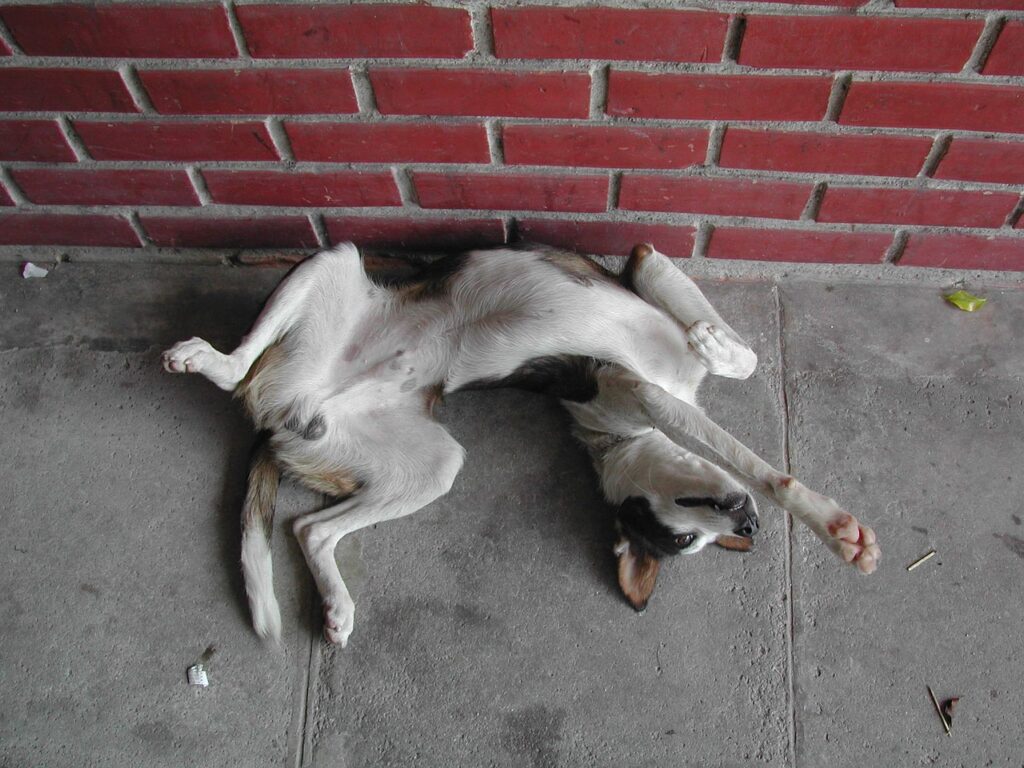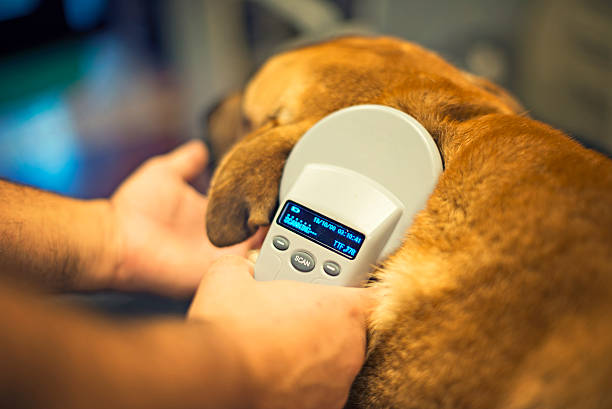Seeing dogs sleep on their backs can often seem adorable. But is this really the best position for them to sleep in? This post will explore the pros and cons of dogs sleeping in this position and examine whether it causes them any damage.
There is a lot of debate regarding whether or not dogs should sleep on their backs. Some believe this is one of the best dog sleeping positions, while others believe it can lead to health problems.
Some pet owners believe that the best sleeping position for their dog is on their back because it is ergonomically correct and helps reduce the amount of spinal compression a dog experiences.
Why Do Dogs Sleep on Their Backs?
As pet parents, you have probably observed your dog in every aspect of their waking and sleeping life. Have you ever wondered why your sleeping dogs lie on their backs and put themselves in a vulnerable position? Dogs sleep on their backs for a variety of reasons:
It’s Comfortable
Whether on the dog bed or the floor, when your furry friend falls asleep, you’ll notice The position allows dogs to breathe easily and keep their heads and necks straight, which is the most natural position for a dog’s body. Dogs are also less likely to wake up with a sore neck when sleeping on their backs.
To Show Submission
When your dog’s sleeping position is on its back, it could mean they’re not on its toes for threats. In the wild, dogs will sleep on their backs to show they are not a threat and will not attack.
Domestic dogs also sleep on their backs to show submission to their owners. When a dog sleeps on its back, it is usually very relaxed and content.
Some people believe that when a dog sleeps on its back, it gives up control and trusts that the person or animal nearby will take care of it.
They’re Cooling Off


Dogs are often seen sleeping on their backs, but what many people don’t know is that there is a reason they do this. Dogs sleep on their backs because they’re cooling off. When a dog curls up on its back, the blood flow to its brain and heart decreases, which cools these organs down. Additionally, by sleeping on their backs, dogs can keep an eye on their surroundings and be prepared to take action if necessary.
It Helps Them Breathe Better
Dogs sleep on their backs because it helps them breathe better. When dogs sleep on their backs, the airway stays open, and they can breathe more easily, allowing them to go on a deep sleep.
This is especially important for dogs who have health problems with their airways, such as asthma or allergies. A dog sleeping on its back can get the rest they need without feeling uncomfortable or having difficulty breathing.
They’re Enjoying a Good Snooze
Dog sleeping positions may vary, but they are most often found sleeping on their backs. This position is often called the ‘dead dog’ pose because it’s common for dogs to fall asleep in this way. But why do dogs sleep on their backs?
There are a few reasons why dogs prefer to sleep on their backs. For one, it’s a very comfortable position that allows them to breathe easily and keep an eye on their surroundings. It can also signify trust and submission since dogs often roll over and offer their bellies to those they trust. Finally, sleeping on your back can signify relaxation and comfort.
Reflex


A Dog sleeps on their backs due to a reflex that causes them to curl up in a ball when feeling threatened. This reflex is known as the “fetal position .” The position protects the dog’s vital organs from being damaged if they are attacked.
What are the Benefits of Dogs Sleeping on Their Backs?
Dogs sleeping on their backs is a common sight. It is often considered a sign of trust or submission. But what are the benefits of dogs sleeping on their backs?
Relaxing Deep Sleep
One benefit is that dogs can breathe more easily while sleeping on their backs. This is because when they sleep on their sides, their pillow partially blocks their airway, leading to snoring or even obstructive sleep apnea. When dogs sleep on their backs, they are less likely to snore and more likely to get a good night’s sleep.
Good for the Dog’s Stomach
Another benefit of dogs sleeping on their backs is that it makes them less likely to suffer from gastroesophageal reflux disease (GERD). When dogs sleep on their sides, the contents of their stomachs can flow back into their oesophagus, leading to heartburn and other symptoms of GERD.
Helps in Recovery after Surgery
Sleep positions are also important for dogs that have undergone surgery. If a dog has had a leg amputated, it will need to sleep on its back for the first few weeks after the surgery. This is because the limb needs to heal and grow before it can be moved.
Dogs that have had surgery to repair a broken leg need to sleep on their backs for the first few weeks after the surgery. Dogs with a broken back will also need to sleep in this position for at least the first few weeks after surgery, if not longer.
They Feel Safe


Dogs sleeping on their back feel safer and more secure when they can see their surroundings. This is likely because they can better keep an eye out for potential threats. In a study of how dogs sleep, researchers found that when dogs could see their surroundings, they were more likely to sleep on their backs.
What are the Risks of Dogs Sleeping on Their Backs?
There are a few risks associated with dog sleep positions. Here are some risks when a dog sleeps on their back:
Choking
The first is that the dog could choke if it vomits while the dog sleeps. The dog’s airway could be blocked if it rolls over and its stomach obstructs its airway.
Gastric Torsion
The dog could develop gastric torsion, a life-threatening condition in which the stomach twists and cuts blood flow to the organ.
Dogs sleeping on their backs is a natural behaviour with benefits and risks. Dogs sleeping on their backs is a natural position for them and has various benefits. It is important to remember that not all dogs will be comfortable in this position, so always observe your dog’s body language and respect their preferences.



